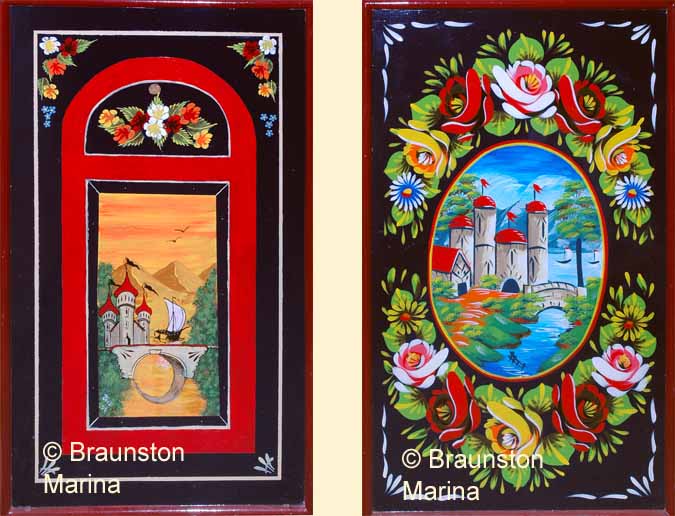 Artist: Dick Harper
White
Artist: Christine Ramsey
Artist: Dick Harper
White
Artist: Christine RamseyNarrow Boat Decoration
or "Roses and Castles" as it is more popularly known
This decoration
became fashionable in the mid 1800's on narrow boats of the Midlands and
associated waterways where families lived aboard. Flowers were a popular item of
decoration on all sorts of domestic wares, texts, wall coverings etc. Similarly
the landscapes, incorporating fields, water, hills and cottages, were frequently
seen on utility ware and papier-mache articles produced at the time. How the
buildings evolved into a castle is open to various theories. It is quite logical that such decoration became applied to the interior of
cabins, just as it was within other domestic and commercial situations. However,
it was an impression of the art-form, applied by people who were not artists in
the true sense.
As a general rule, the outer surfaces of boats owned by companies tended to have
large lettering and scrollwork, supplemented with geometric patterns. Roses and
castles were primarily for the interiors, although individual owner-operators
tended to have their boats decorated quite lavishly on the outsides. Some
companies too, had decoration outside.
The people who applied this decoration worked predominantly on boat building and
repair docks, and usually did a variety of other jobs around the dock. The paint
was made up from ground pigments as required. Inevitably, each painter had his
own recognisable style in executing the basic concept, giving a recognisable
indication of where a boat had been docked. Individual styles were passed from
one painter at a dock to another trainee painter. This established a style
associated with that particular dock, within which were the characteristics of
the individual painters.
Contrary to popular opinion, although certain parallels can be acknowledged,
there is no connection between the boat people and the decoration of the boats
with Gypsies or Showmen. It is simply an art form popular at the time, which was
adapted to be applied to the surfaces of living boats' cabins.
Locally there were a number of docks, two of the most notable and late
surviving, being at Leighton Buzzard and Braunston, near Daventry. Modern-day
boat owners still want to add the decoration to their boats, albeit done with
modern paints and frequently with modern interpretations. This has resulted in
the art form being widely seen on the waterways today, far wider than the
original traditional art had
extended.
Brian Collings, January 2006.
************************************************************************************
The following six
panels are reproduced by kind permission of Braunston Marina. They have
been
painted by contemporary artists and decorate the company office at Braunston.
 Artist: Dick Harper
White
Artist: Christine Ramsey
Artist: Dick Harper
White
Artist: Christine Ramsey
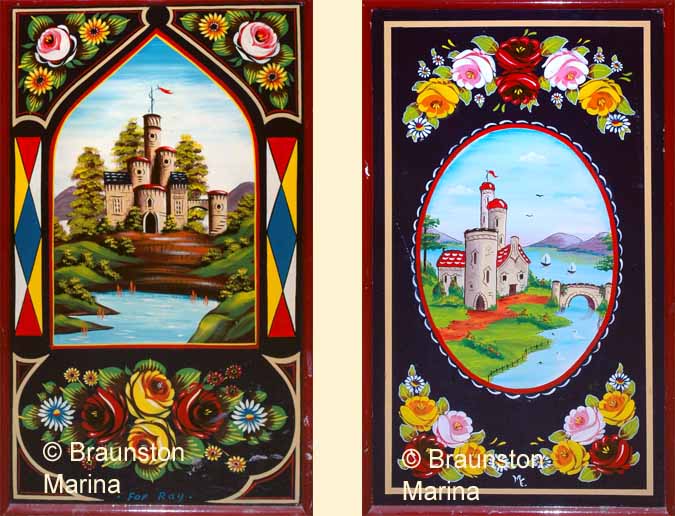
Artist: Phil Speight
Artist: Margaret Cowlan
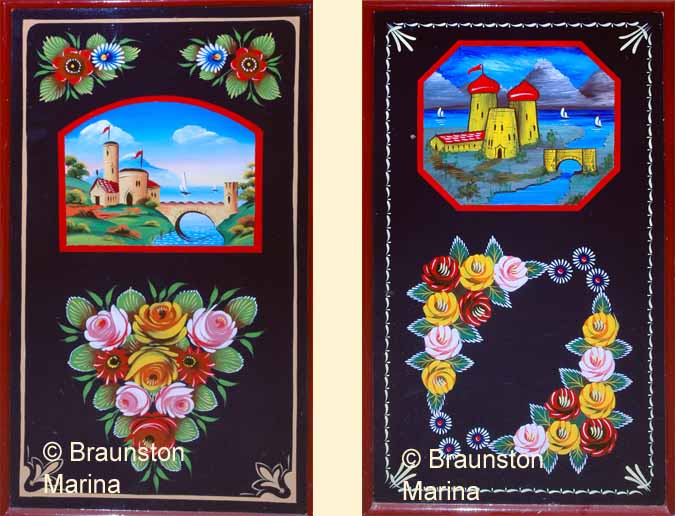
Artist: Tony Lewery
Artist: Shiela Bassett
************************************************************************************
There follows two pictures of Sunny Valley - a barlow butty featured in a film
made
by Ealing Studios in 1944 called Painted Boats, in fact the boat was Northolt an
ex FMC boat acquired by Barlows and renamed and painted for the film. It
was
re-decorated in the 1990s by Brian Collings of Stoke Bruerne and is now
privately
owned, being based in Tamworth. It was used in the Legging
Re-enactment through
Blisworth tunnel in 2005.
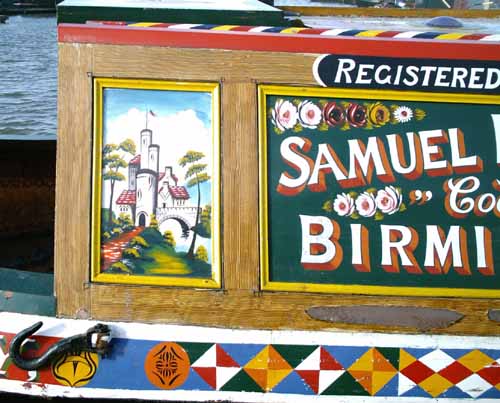
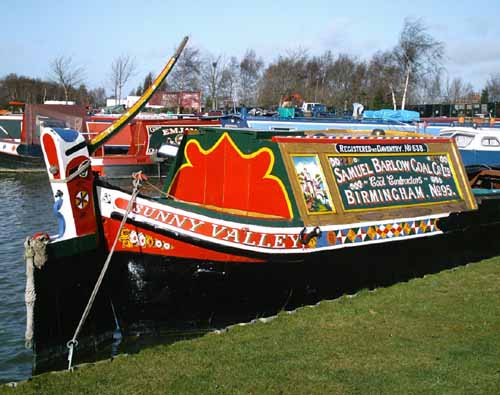
photos by J Payler
***************************************************************
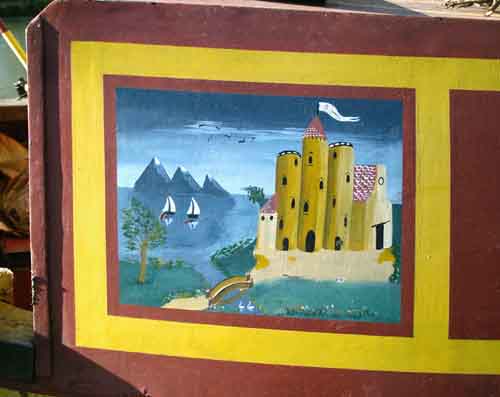
Modern decoration by the boat owner, side panel on butty "Beverley"
which was
originally a British Waterways
boat.
photo: J Payler
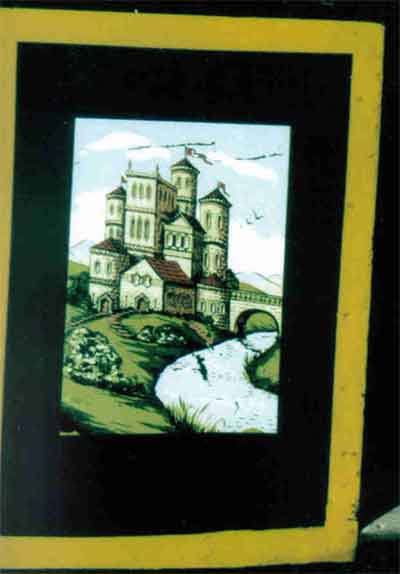
Decoration on panel of butty "Pictor" when operated by Birmingham
and Midland Canal Carrying Co. The company was one of those forced
in 1967 to attempt to continue commercial carrying after the demise of the
Barlow and Willow Wren carrying companies.
photo: J Payler
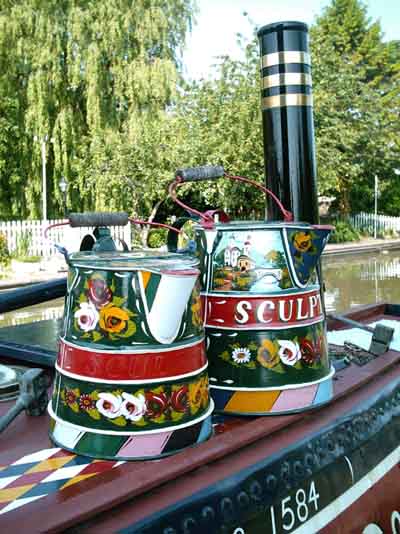
Typical cans carried on top of the boat cabin, normally on the left hand side.
This would have been their only
water supply when on the move years ago.
Motor "Sculptor" is normally moored
outside the museum at Stoke Bruerne.
photo: J Payler
It is common these days for such cans to be referred to as "Buckby
Cans" or as simply
a "Buckby". This probably stems from a 1946 book by L.T.C. Rolt
entitled "Narrow Boat"
as explained in an email response by Brian Collings of
Stoke Bruerne to an enquiry by
Jim Payler. It transpired that brightly painted objects on narrow boats
have been noted
as early as the 1850s.
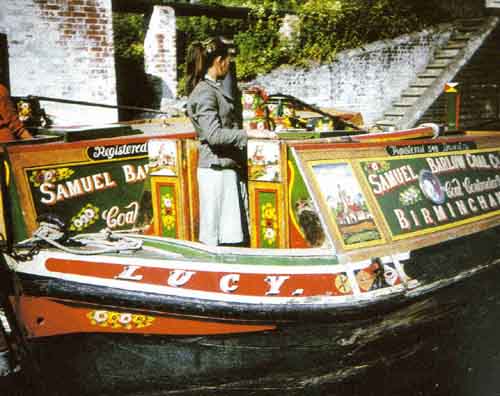
Butty "Lucy" was built in Barlow's Yard at Braunston in 1953 for John
Knill & Sons.
Named Lucy after John Knill's wife - the paintwork is typical of Barlow's.
photo: J Payler
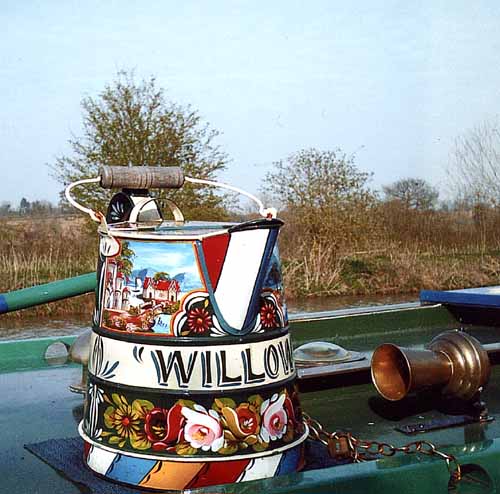
A private boat with a water can decorated with the boat's name.
photo: J Payler
"Buckby"? - see above.
All of the above decorations are relatively modern - below it is hoped to
show some
Victorian work by courtesy of local museums. The next three images are
some relatively
old examples that are unlikely to be Victorian, courtesy of Shardlow Museum.
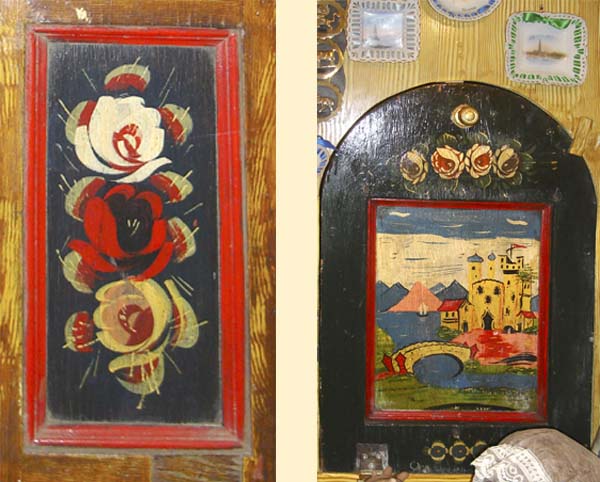
photos J Payler, courtesy of Shardlow Museum
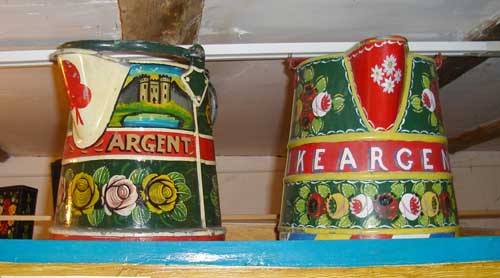
photo J Payler, courtesy of Shardlow Museum
And the next few images are from the work of Frank Jones who worked at
Faulkner's Yard at Leighton Buzzard and were purchased in a far sighted
move in 1946. They are shown by courtesy of the
Luton Museums Service.
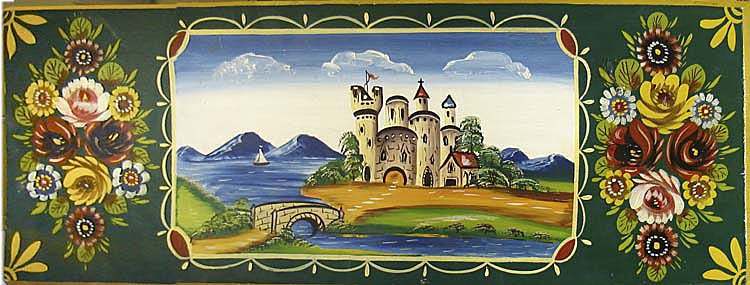
Seat Board
J Payler Courtesy Luton Museums Service
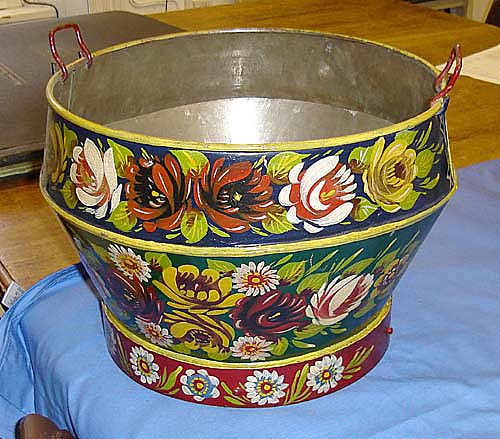
Horse's Bowl
J Payler Courtesy Luton Museums Service
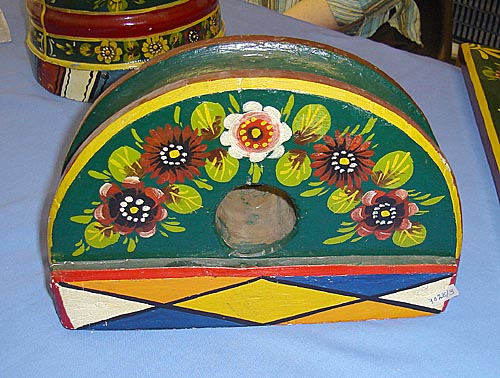
Running
Block
J Payler Courtesy Luton Museums Service
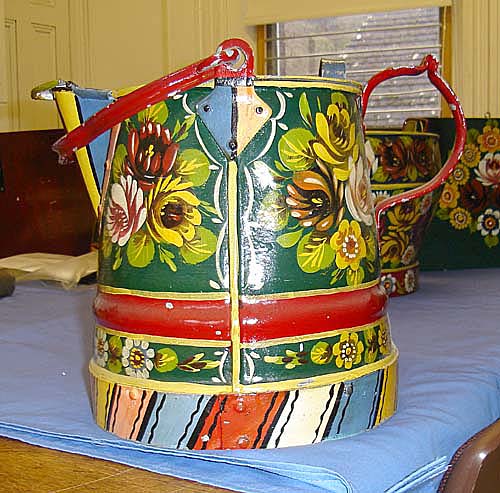
Water Can (Buckby?)
J Payler Courtesy Luton Museums Service
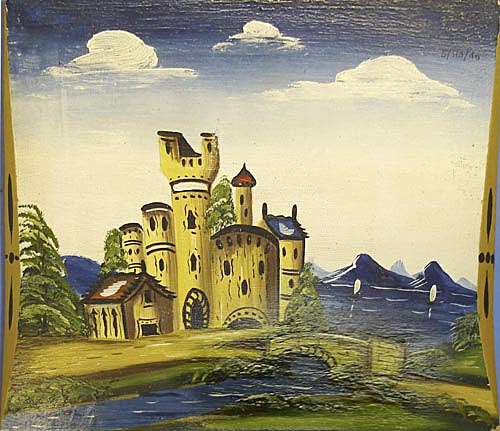
Cabin Block
J Payler Courtesy Luton Museums Service
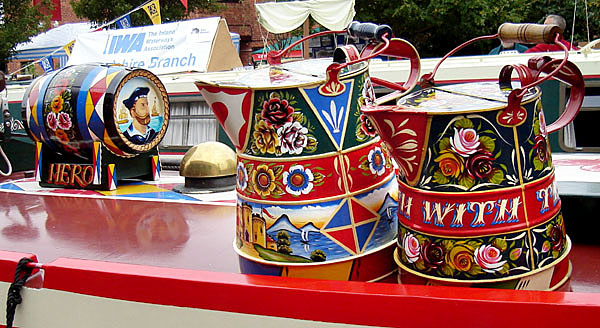
The paintwork used here is a modern representation of decoration used earlier on
traditional narrow
boat ware. The water cans and barrel were used to carry water and it appears
that in the horse drawn
boat era some canal water was so polluted it was not suitable for horses to
drink from the canal.
The boat here was Hero a modern motor boat and was appearing at the Banbury
Canal Day on the
7th October
2007.
Account and photo J Payler
-----------------------------------------------------------------------------